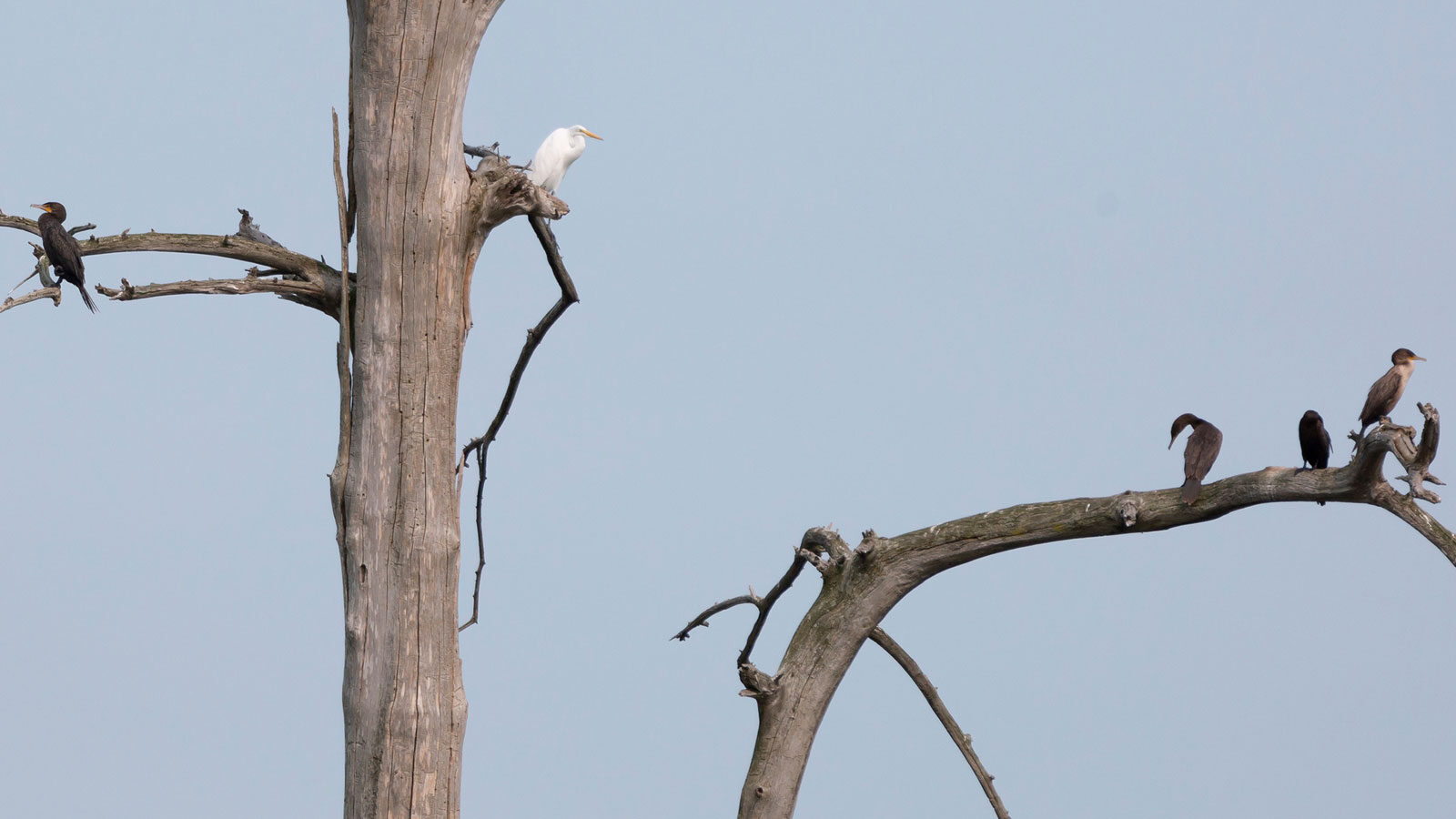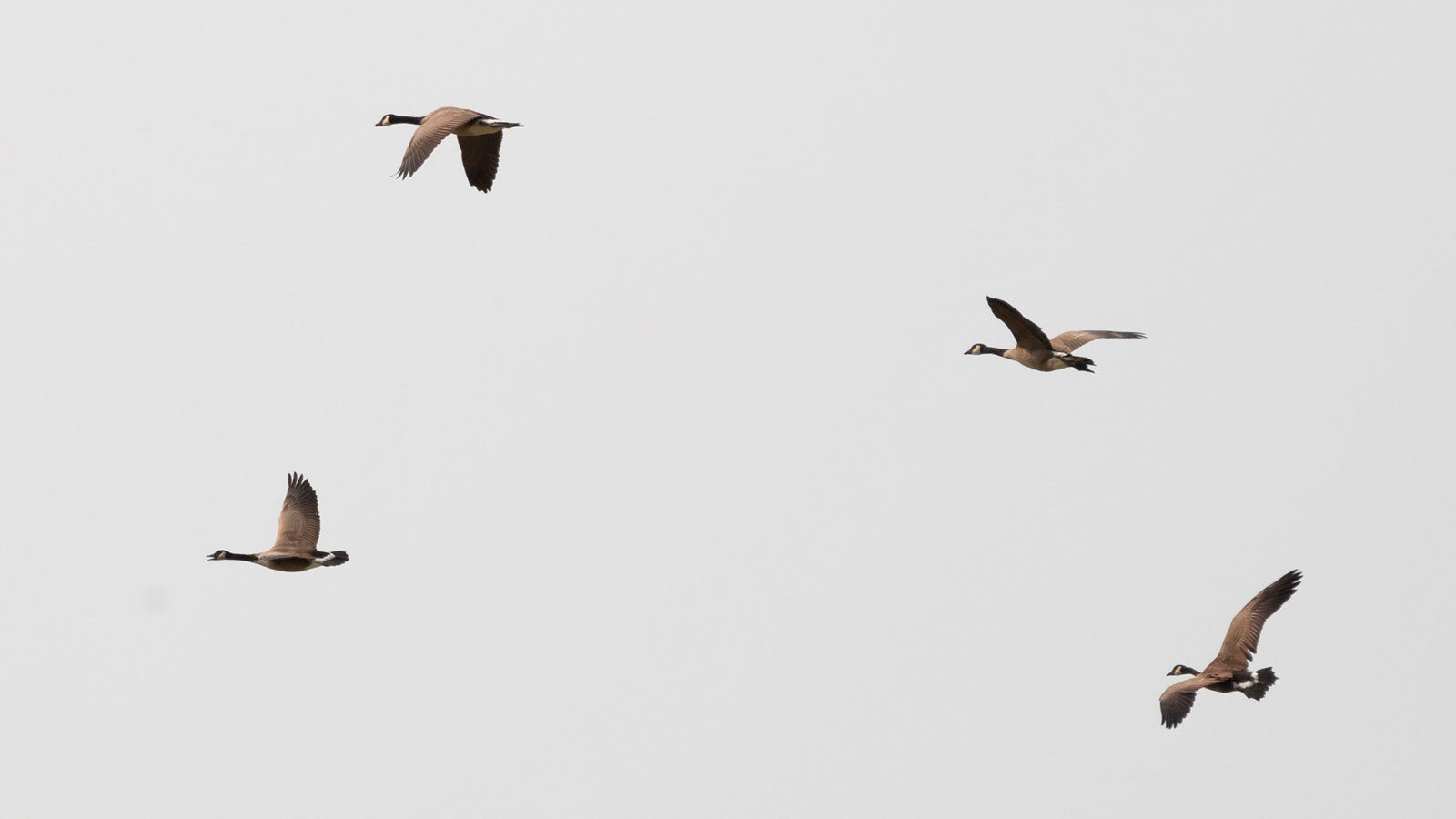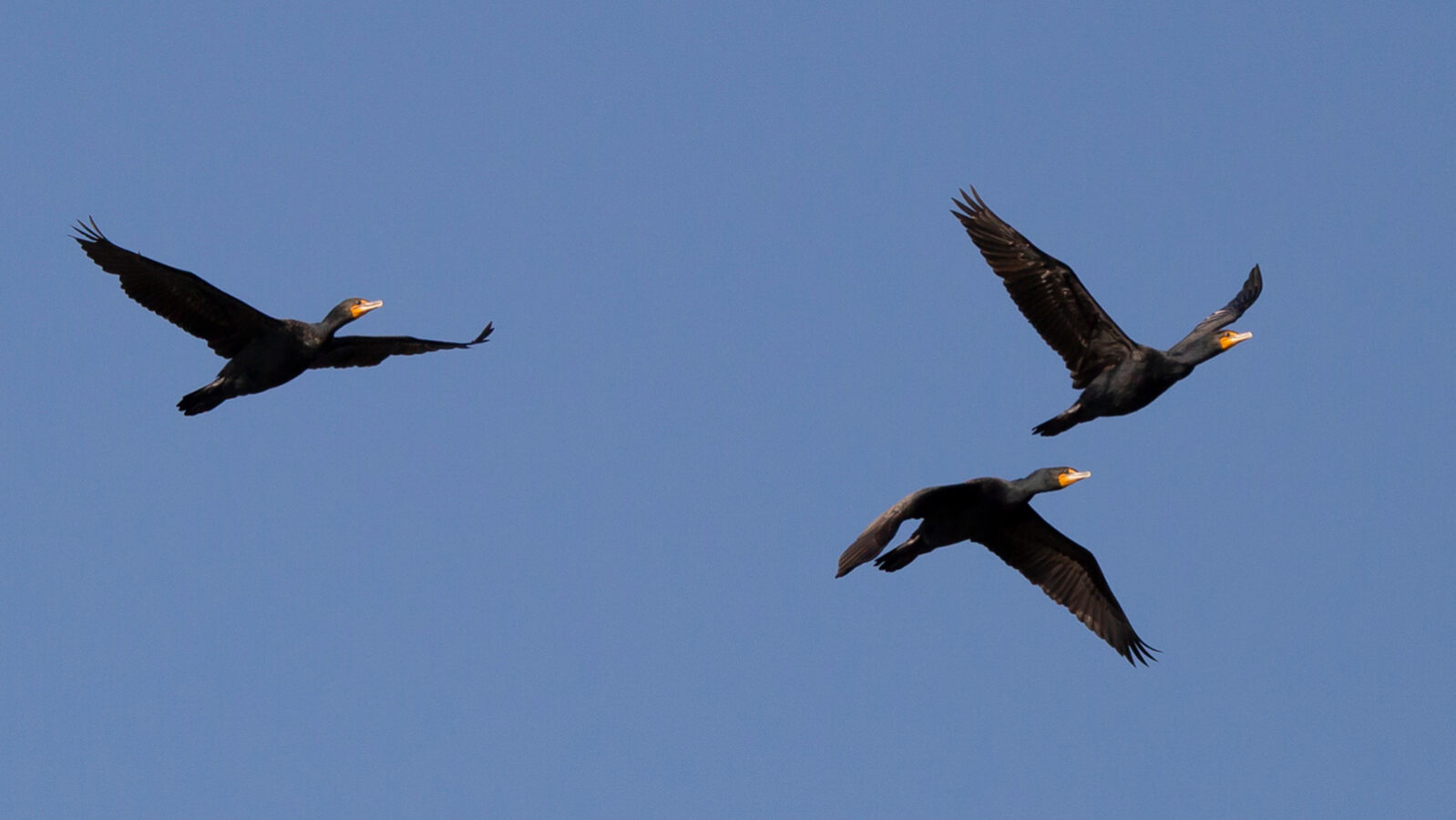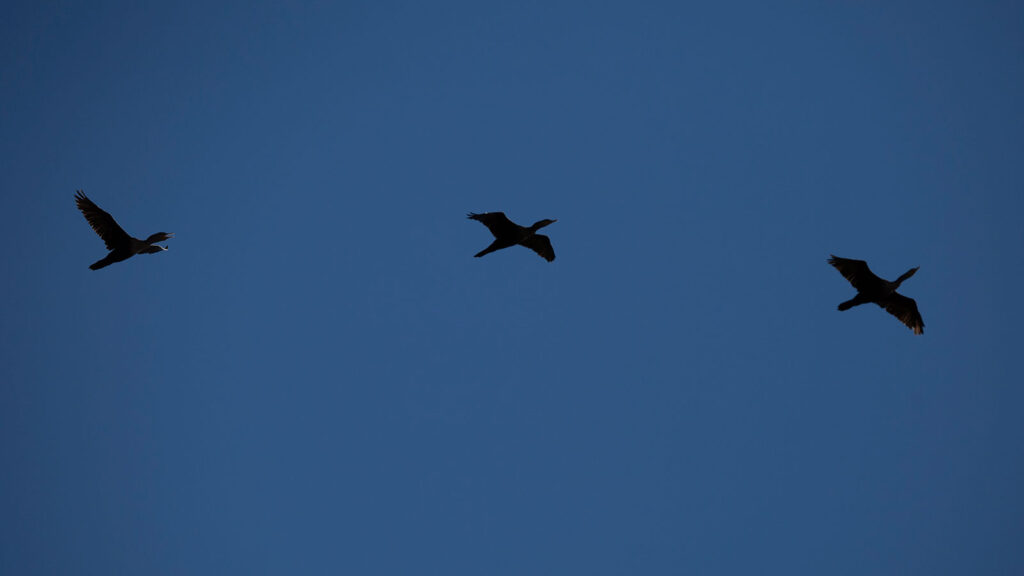
Did you know that double-crested cormorants kill trees with their feces?
Double-Crested Cormorants
at
a Glance
Key Features:
Double-crested cormorants are black with yellow beaks and blue eyes.
Least Concern - Population Increasing
Habitat:
Lakes and ponds
nesting habits:
Double-crested cormorants build their nests on the ground or treetops out of sticks, bird bones, garbage, and grass.
seasons double-crested cormorants are active in our area:
Spring, fall, winter
Diet:
Fish, amphibians, insects, and crustaceans
hunting Behavior:
Double-crested cormorants forage by floating on water and making shallow dives.
Commonly Confused With:
Anhinga and Canada Geese

Double-crested cormorants are often confused with Canada geese from a distance because of their shape.

Double-crested cormorants are often confused with anhinga because of their coloration.
